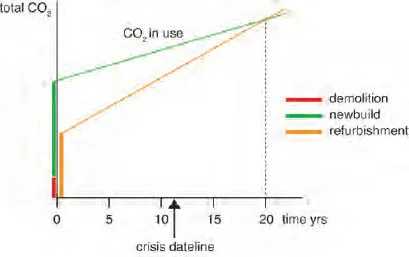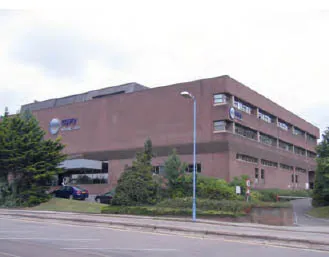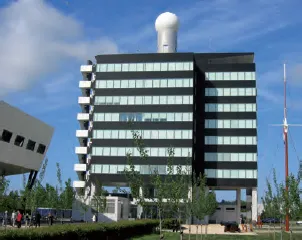![]() Part One Principles
Part One Principles![]()
1 | Strategy for Low Emission Refurbishment |
1.1 The case for low emission refurbishment: Energy use in buildings
In the non-domestic sector in Europe, building refurbishments offer far more opportunities for reducing emissions than new building; the latter represents annually less than 1.5 per cent of the building stock. The usual motivation for refurbishment includes:
• replacement of degraded finishes and components;
• tailoring space organization to new uses;
• improving environmental quality.
These reasons may be sufficient in themselves to justify the cost. If at the same time the building can be made more energy efficient, there will be a reduction in running cost and a reduction in CO2 emissions. This will often be at a modest extra cost that can be justified by reduced running costs, or in some cases even, no extra cost.
1.2 Refurbishment versus rebuild: Economics and environmental impact
There are many instances when demolition and rebuild will be considered as an alternative to refurbishment. This could be justified purely on economic grounds, or the advantages offered by a new building could be considered to justify the extra cost. However, two non-economic factors should be considered:
1 The environmental impact of refurbishment versus newbuild.
2 The socio-economic impact.
Initially, the environmental impact of refurbishment will almost always be less than demolition and newbuild. This is because all the materials carry embodied energy – to replace them causes new carbon emissions (Figure 1.1). Furthermore, the demolition process and waste disposal creates carbon emission as well as other waste disposal impacts.
Figure 1.1 Embodied CO2 associated with newbuild and refurbishment. Note large CO2 content for bulk materials such as concrete and steel. Components made of these materials are the ones that are not normally replaced in refurbishment
Source: Thomas Lane quoting the Simons Construction Group in ‘Our dark materials’, Building, 9 November 2007
Figure 1.2 CO2 emissions for newbuild and refurbishment as a function of time. The break-even point is very dependent upon the difference in performance (indicated by the slope of the graph) of the refurbished and newbuild.
It is often argued that a new building will operate at higher energy performance than a refurbished one, and that during its lifetime, may have less environmental impact. This dynamic relationship is shown in Figure 1.2. It demonstrates two important effects – that newbuild is only the lowest emitter after the break-even time period, and that this period can be extended by improved performance of the refurbished option. It also demonstrates that if the break-even time is beyond the time of the environmental crisis (or emission reduction target), the life-cycle emission is irrelevant and the refurbished building is the best choice. It is also evident that the breakeven point is sensitive to the actual performance of the buildings; new buildings have not in general performed as well as predicted and this will postpone the break-even point.
The second consideration is about social benefit and employment. Generally, refurbishment carries a higher proportion of labour cost than newbuild. For example, the repair of a concrete structure and the cleaning of concrete finishes will direct money to tradesmen that in the case of new build would go to investors in concrete and steel manufacture.
1.3 The building, plant, and occupants as a system
Building simulations and analyses of monitored data have shown that the building fabric alone does not narrowly determine the energy performance. Figure 1.3 shows the performance being determined by three sub-systems, each having a variance in performance of about twofold. When a poor building combines with badly designed systems and poor management, the resulting energy performance can be dramatically worse than the best. This wide variation of performance has been observed as shown in Figure 1.4. It is interesting to note that building no. 92 (extreme right) was built in 1987 and refurbished in 1992.
Figure 1.3 The building, the mechanical services and the occupants, as a system. Each controls a range of performance. A poor building may require much input from services which if badly managed leads to high energy consumption. The reverse may also be true. This accounts for a wide variance in energy consumption of similar buildings
Figure 1.4 The annual CO2 emissions per m2 for 92 office buildings in the UK. The 20-fold variance illustrates the interactive effect between building, services and occupants
Source: Data from Energy Consumption Guide 19–Energy Efficiency in Offices (1998) BRECSU, Watford
This evidence weakens the case for newbuild, since it shows that the inherent properties of the building are only one of the determining factors. This is particularly true in non-domestic buildings where overall energy consumption is dominated by processes and activities in the building. Both systems and management can be of as high performance in a refurbished building as in a newbuild.
Figure 1.5 Deep-plan buildings such as these, built in the era of cheap energy and relying on air-conditioning and artificial lighting, may present insurmountable problems for sustainable refurbishment
However, there may be individual cases where the inherent qualities of a building present insurmountable problems. For example, buildings with very deep plans, relying entirely on air-conditioning and artificial lighting, built in an era of cheap energy (Figure 1.5), will always be problematic both for their energy consumption, and internal environmental quality. Thus it is important to properly assess the potential for refurbishment, before conclusions are drawn.
1.4 Implications for change of use
Refurbishment is often accompanied by change of use. This may be across recognized use types – for example a nursing area of a hospital becoming an administrative centre (Figure 1.6), or a change from residential to office use (Figure 1.7). Or it may be that within a use type the functional demands on spaces are changing due to reorganization and the impact of changes in practice and technology. For example, developments in IT have a continuing influence on office practice and the spaces that support it.
Figure 1.6 REVIVAL building Meyer Hospital, Florence: Refurbishment accompanies change of use from nursing area to hospital administrative and reception area, involving different environmental conditions
Figure 1.7 REVIVAL building The Albatros, Den Helder, The Netherlands: Refurbished in conjunction with change of use from residential to offices
It is difficult to generalize here, but it could be said that opportunities are sometimes missed because designers impose stereotypical solutions, often ignoring the serendipity of fitting a new function into a building generated by a different set of aims.
For example, in a conversion of an old factory workshop to modern office use, high ceilings with exposed structural slabs are often replaced with suspended ceilings for acoustic reasons, and under the misguided impression that the original spaces would be impossible to heat efficiently. This action not only destroys much of the architectural quality of the space, but will also have a negative influence on daylight distribution, natural ventilation and, possibly, thermal response.
Change of use may bring about changes in purely technical parameters. These include:
• occupancy pattern and density;
• internal gains;
• lighting levels;
• ventilation rates;
• thermal set-points and response;
• acoustic properties (reverberation time, noise exclusion).
These changes may bring about benefits and disbenefits. For example, an historic warehouse converted into a library will create a difficult challenge to the designer if the intention is to provide daylight, due to the shallow floor-to-ceiling height. On the other hand, a heavyweight building that required wasteful intermittent heating in its original function as a primary school, would not be so inefficient if used for a much longer occupied period as, for example, a health clinic. Furthermore, the intermittent heating would be less wasteful anyway if the envelope insulation was improved as part of the refurbishment package.
Thus, the inherent properties of the building, the operational requirements of the new use, and the technical options in the refurbishment all have to be considered interactively.
Impact on energy consumption
In spite of improvements to the performance of the fabric and systems, change of use may bring about an increase in the energy consumption. This does not necessarily mean that the low-energy refurbishment has failed, since the measures adopted have undoubtedly led to lower energy consumption than if absent.
In measuring the success of the refurbishment then, it would be fair to make a comparison of the building’s actual energy performance (shown at A in Figure 1.8) with, firstly, the existing building under the new use an...







